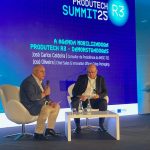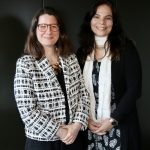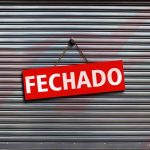The Algarve, and adjusting to travel’s New Normal
What might travel be like during the recovery period once Covid-19 is under control? Thanks to its aggressive national response to the pandemic, Portugal is providing clues. Native Floridian Sheree M. Mitchell, founder and president of Lisbon-based boutique tour operator Immersa Global, recently completed a two-week trip through Portugal. In this, the second part of a four-part series of Dispatches, she shares what she’s discovered with Essential Business and Travel Weekly readers.
Article kindly submitted by Arnie Weissman, Editor-in-Chief, Travel Weekly
Departure day, July 23, had arrived. This was to be my first out-of-town-trip since mid-March, so I was excited and a little nervous. The first order of business was to pick up the rental car in Lisbon; since many Portuguese tourism suppliers had already implemented touchless ways to do business, all of my documents had already been sent electronically to minimise in-person contact. I arrived at the car rental office at 10 a.m., and by 10:30 I was on the road, headed to Sagres, the westernmost point of the Algarve. ETA: 1:30 p.m.
The drive was unusually easy given that this was typically high, high season. As I approached O Martinhal Resort — my home-to-be for the next 48 hours — I felt a sense of relief and nostalgia. It was a pleasant flashback to my pre-pandemic life and work, and it was very welcome.
Once I reached the main building, I parked, secured my mask behind my ears and walked to the entrance. I was “greeted” by a tall stand with a bottle of hand sanitiser and a sign that reminded me to use it. So, squirt, squirt. Rub, rub.
In the reception area, there were a few guests scattered about. Everyone wore masks and kept their distance from one another.
The receptionist greeted me from behind a plexiglass shield. I gave him my name; as with the rental agency, all of my information had been uploaded days earlier during the pre-arrival process. While he prepared my room key, he had me sign a form and select a breakfast time for the following day. That request, making a reservation for breakfast, was certainly a change from pre-pandemic times, and one that was to be repeated throughout my travels. It was intended to limit the number of people in the dining room at any one time.
Minutes later, with the help of a friendly bellman, I was on my way to my room. The door was sealed with a Clean & Safe label, and the bellman saw me hesitate to break it. He explained that it was OK to push the door open; the seal was their way to ensure that guest rooms remained disinfected after cleaning.
I held the door open for him to come in with the my luggage, but to my surprise, he didn’t budge. As he began handing me my bags over the threshold, he explained that, due to Covid-19, staff can no longer go inside the rooms.
After months at home, I was finally in a hotel room. This was the moment that my colleagues, clients and I had all been waiting for. Everyone wanted to know: “What’s changed?” and “Does it feel safe?”
I was on a mission. I would find out.
I scanned the entire space for anything out of the ordinary. There may have been a throw rug or some decorative pillows missing here or there, but nothing seriously amiss that I noticed.
Then I saw what looked like the welcome gift on the desk. Rather than fruit or a bottle of wine, I found a couple of disposable masks, hand sanitiser and individual alcohol wipes. I smiled. Brilliant!
I looked for the minibar, curious to see how this high-touch amenity would fare in the new low-touch environment. Once I discovered where it was hiding, I opened the door to find an empty minifridge with a QR code inside. I used my smartphone to scan the code, which immediately opened an online minibar menu.
If you wanted immediate service on an item, you could call for it; otherwise, you submitted the order and housekeeping would stock the item in your minibar the following day.
The bathroom was the last and probably least exciting area to check out. It felt very pre-pandemic normal, with the typical individual-size amenities, towels per usual and bathrobes.
It was lunchtime. When I arrived at the restaurant, the host politely called my attention to the hand sanitiser as he confirmed my reservation.
My first impression was that the restaurant looked a bit barren. Something was missing. I asked about that. The host explained that tablecloths, preset tableware and physical menus were no longer being used.
Later that evening, I realised that I’d forgotten to make a dinner reservation. I decided it was the perfect opportunity to try out the pandemic version of room service: Scan a QR code, make selections, hit “order” and voila! Half an hour later, a runner was at the door with my dinner.
Not on an elegant table cart but in a large paper bag.
But change from the norm was most significant at breakfast. The host smiled, confirmed my reservation and walked me to my table. He explained that beverages were brought a la carte, and the food was served as a “touchless assisted buffet.” The description itself sounded like an oxymoron.
But touchless it was. There were masked servers standing behind a large plexiglass shield that separated them (and the food) from the guests. Each plate was carefully prepared per instructions, then handed over to the guest. Beverages were waiting on the table when I returned. Impressive!
After breakfast, I decided to explore the village beyond the resort. I’d read that there was a 16th century fortress nearby that was worth a visit.
I was in for a treat. Sagres Fort (Fortaleza de Sagres) was a massive structure built atop a huge cliff that juts out into the Atlantic. The museum experience itself left a lot to be desired, but the views were breathtaking. It felt like I was standing on the edge of the world. And, I suppose, centuries ago, people who were standing where I was would have believed they actually were on the edge of the world.
After a couple of hours exploring the fort, I moved on to Ponta da Piedade grotto in Lagos, 20 miles away. There were very few cars in a parking lot that was clearly built to hold many more.
The grotto is absolutely gorgeous. And had I more time, I would have taken a little boat ride to explore the area by water, as well.
A full day of sightseeing behind me, I headed back to Sagres and arrived at my room just in time to catch a beautiful Algarve sunset, my last in the region. For now.
Grateful thanks also to Sheree Mitchell – Immersa Global, Visit Portugal which covered all expenses, Travel Weekly, Paulo Salvador and Mesa Nacional.










